Dino Graveyard: Photos of Dinosaur National Monument
America's focus
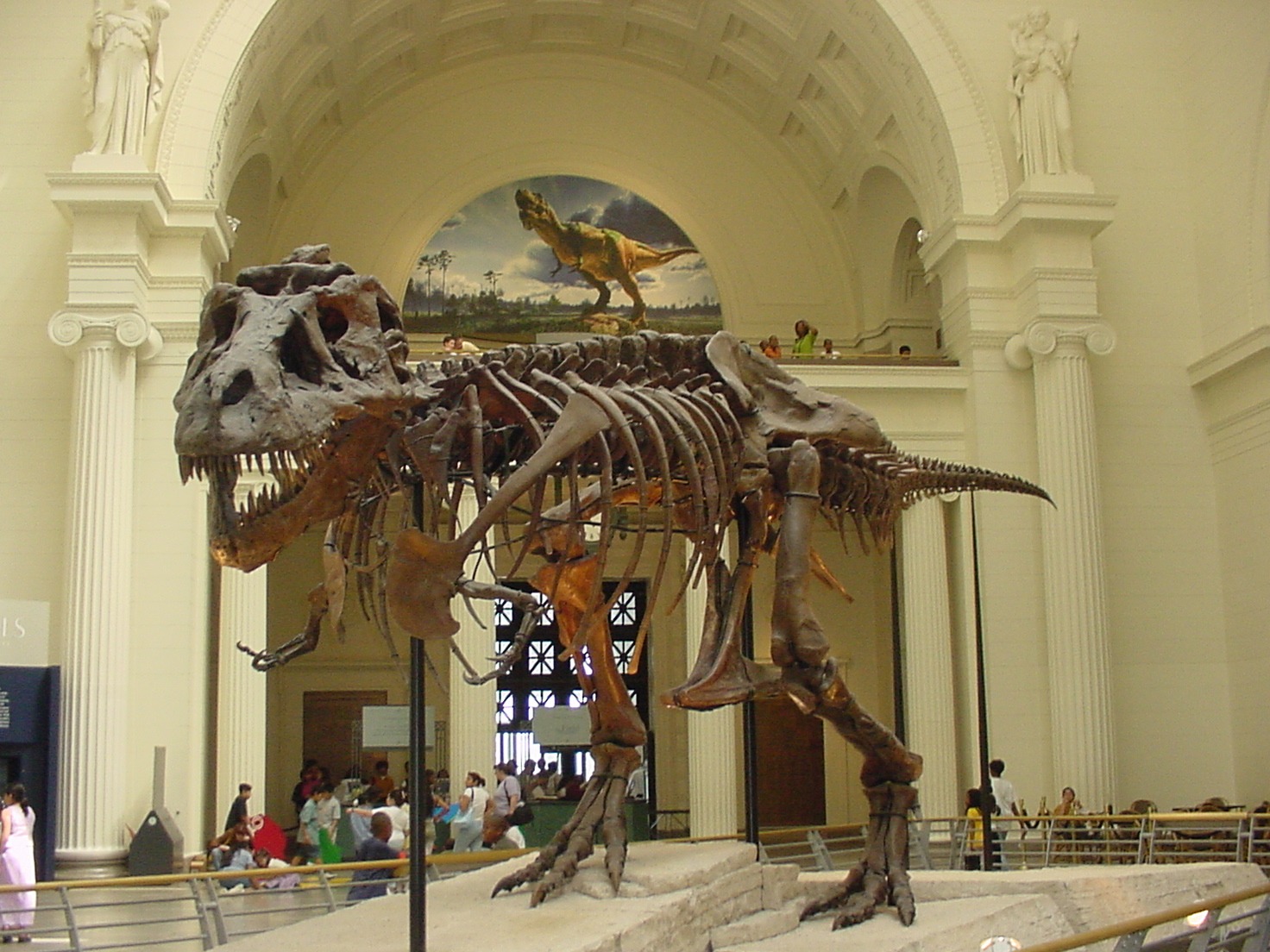
The modern world is fascinated with dinosaurs. On every continent, the discovery of a new dinosaur fossil becomes the leading headline in local media. Dinosaur movies, dinosaur costumes, dinosaur displays, dinosaur toys, etc. are a favorite with children and adults the world over. Museums, like the Field Museum of Natural History in Chicago, are overflowing with visitors to view the ancient skeletal dinosaur replicas like that of the Tyrannosaurus rex shown here and affectionately named "Sue."
A distant beginning
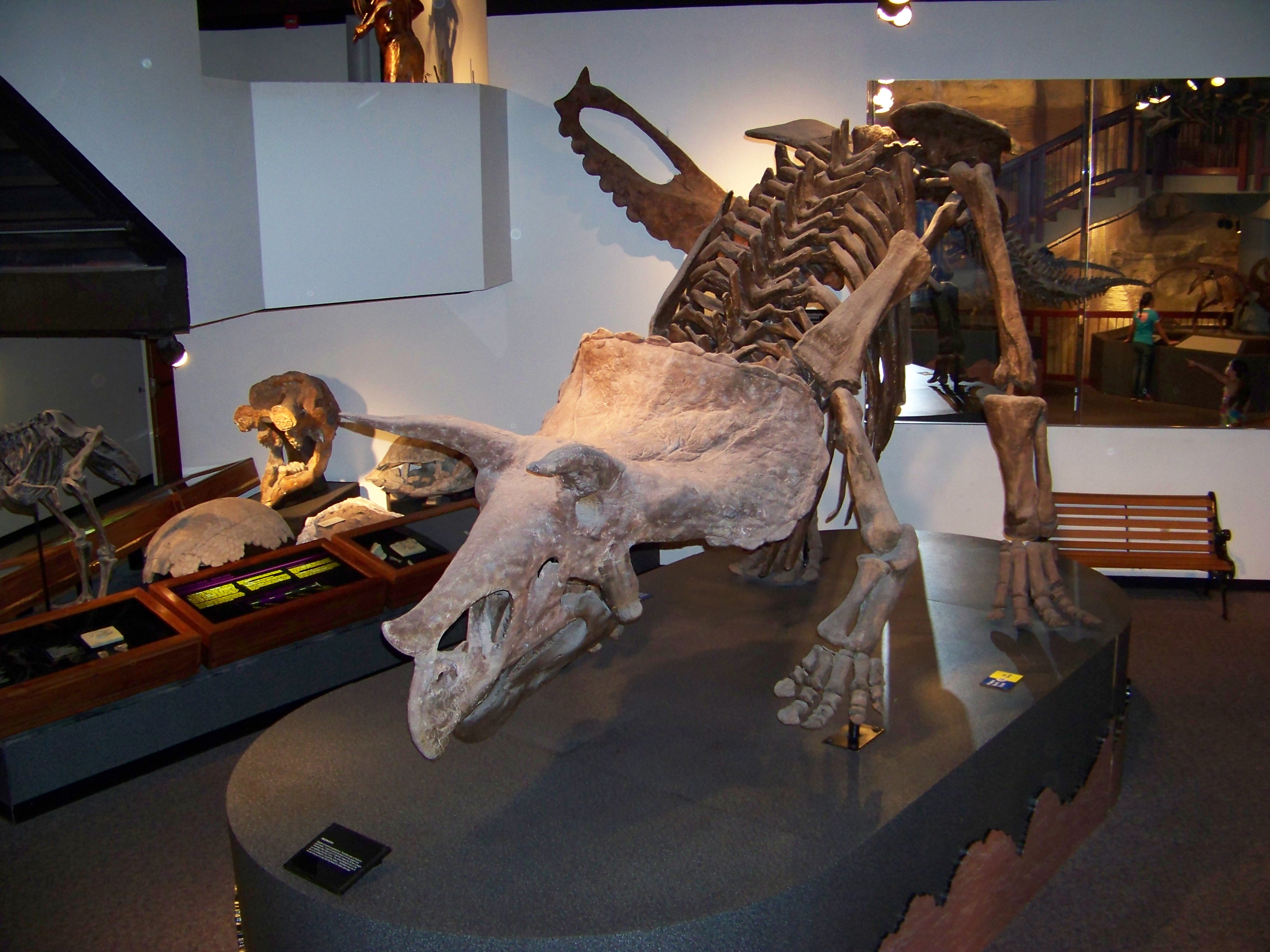
And even though the science of studying dinosaurs, paleontology, did not begin in North America (that honor belongs to Europe, when, in 1842, Sir Richard Owen created the term "Dinosauria"), North America is considered one of the best places to discover the fossil remains of these ancient "terrible reptiles." The Age of Dinosaurs began in the Late Triassic period some 250 million to 220 million years ago when Pangaea, the great supercontinent, was beginning to break up. Their time continued through the Jurassic period (200 million to 125 million years ago) and ended in the late Cretaceous period (145 million to 65 million years ago). When considering only longevity, dinosaurs are the most successful groups of animals to have ever lived on the planet.
Shown here is the skeletal replica of a young herbivorous ceratopsid dinosaur, Triceratops, which roamed the Great Plains of North America during the late Cretaceous.
Ancient order
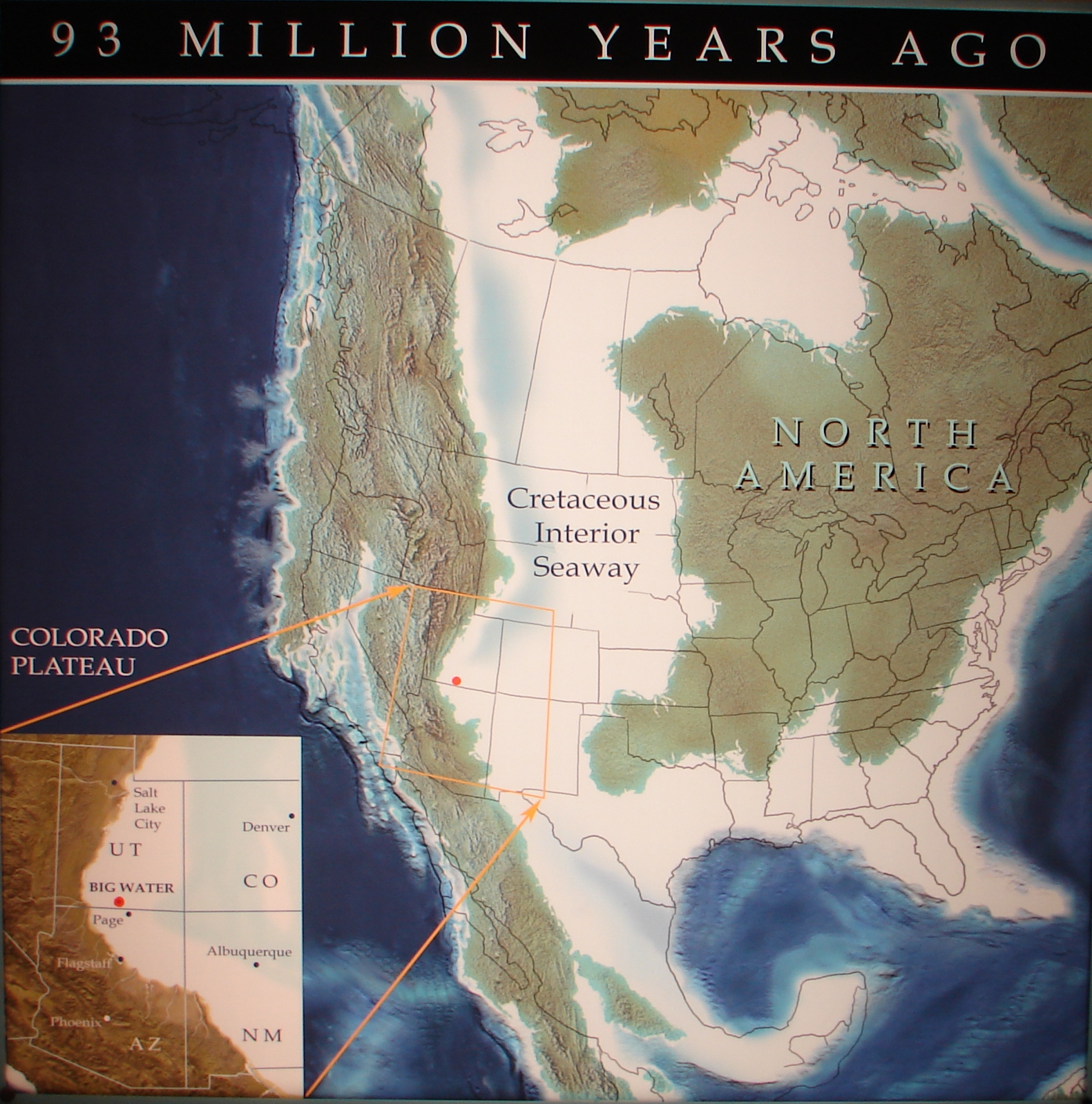
During the Age of Dinosaurs, much of North America was at the heart of Pangaea and near the equator of the ancient Earth. For millions of years, shallow, primordial seas ebbed and flowed over the land, while prehistoric rivers carried tons and tons of sediment and silt that buried the skeletal remains of these ancient beasts under miles and miles of rock and mud. During the continent's mountain-building eras, when plate tectonics was building and reshaping the planet’s mountains, the fossilized remains of the long-buried dinosaurs were once again brought to the surface of the Earth. And since a vast majority of the landscapes of the American West are sparsely vegetated, discovering the fossilized remains of dinosaurs within the bare rock becomes highly possible.
National parks
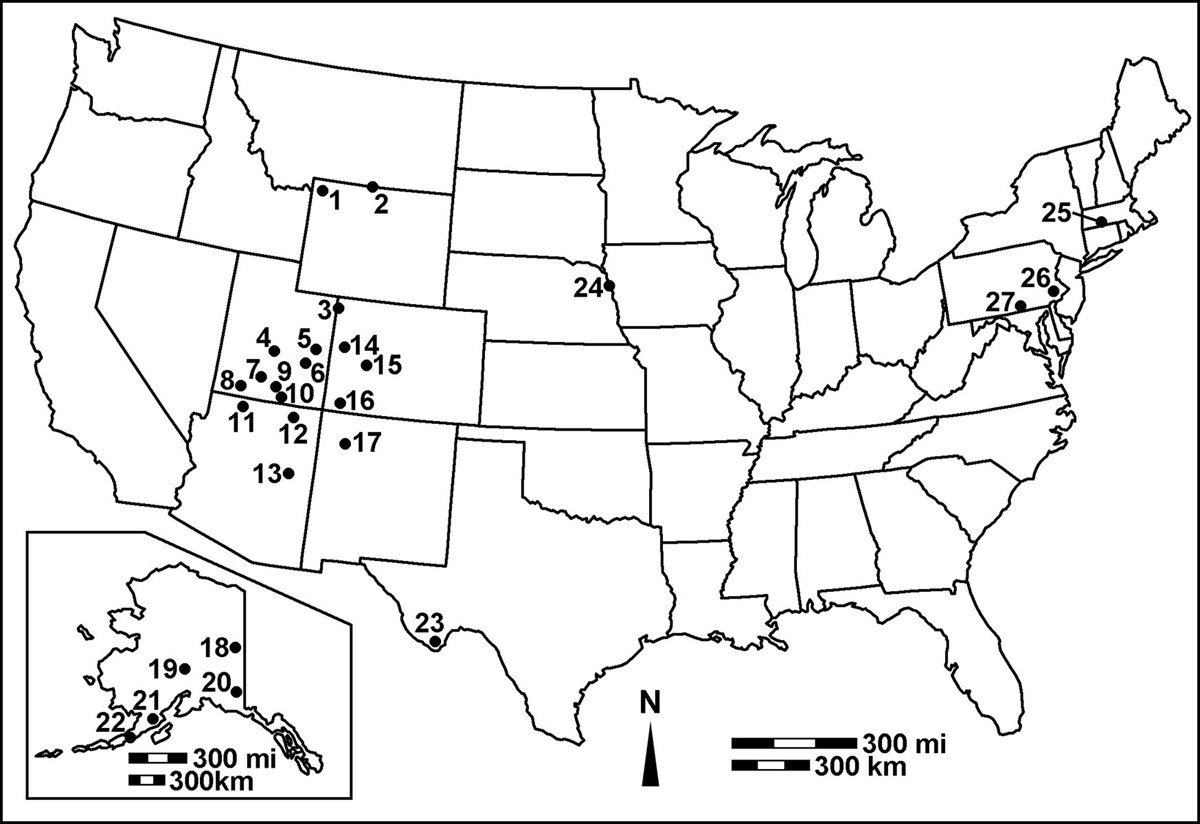
Within the continental United States, the National Park Service has identified and protected 27 sites where non-avian dinosaur fossils and/or dinosaur tracks have been discovered. The NPS map above was developed in September 2018 and shows that many of these sites are located on or near the Colorado Plateau, but dinosaur sites protected by the National Park Service range from New England to the Aleutian Islands of Alaska. The first reported find of a dinosaur fossil in the United States occurred on July 25, 1806, when William Clark, of the Lewis & Clark expedition, discovered a "large bone" near Pompey's Pillar in today’s Montana. But the most significant early dinosaur find occurred at a place called Dinosaur Quarry on Aug. 19, 1909.
A rocky location
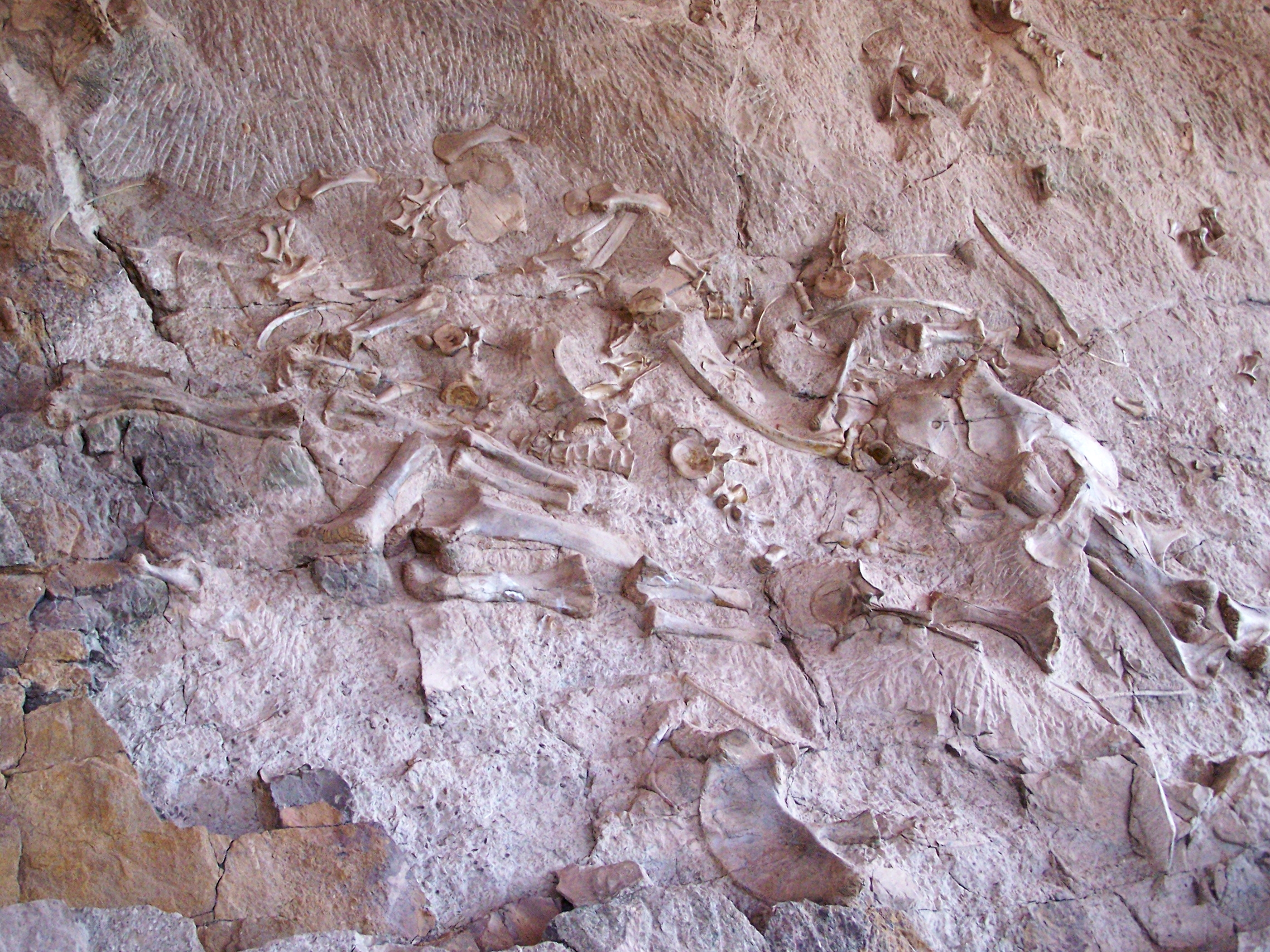
It was on this date, Aug. 19, 1909, that paleontologist Dr. Earl Douglass was working in the Uinta Basin, straddling today’s border of Utah and Colorado, and discovered the greatest quarry of dinosaur fossils ever found anywhere in the world. Along the quarry's rock walls, shown here, Douglass and his team discovered thousands of dinosaur fossils that included 11 different species fossils like the remains of Stegosaurus, Allosaurus, Apatosaurus, Camarasaurus and Diplodocus. So impressive was the discovery of these 150-million-year-old dinosaur fossil beds, that in 1915 President Woodrow Wilson designated this area that contains over 800 paleontological sites as Dinosaur National Monument.
Gorgeous dig
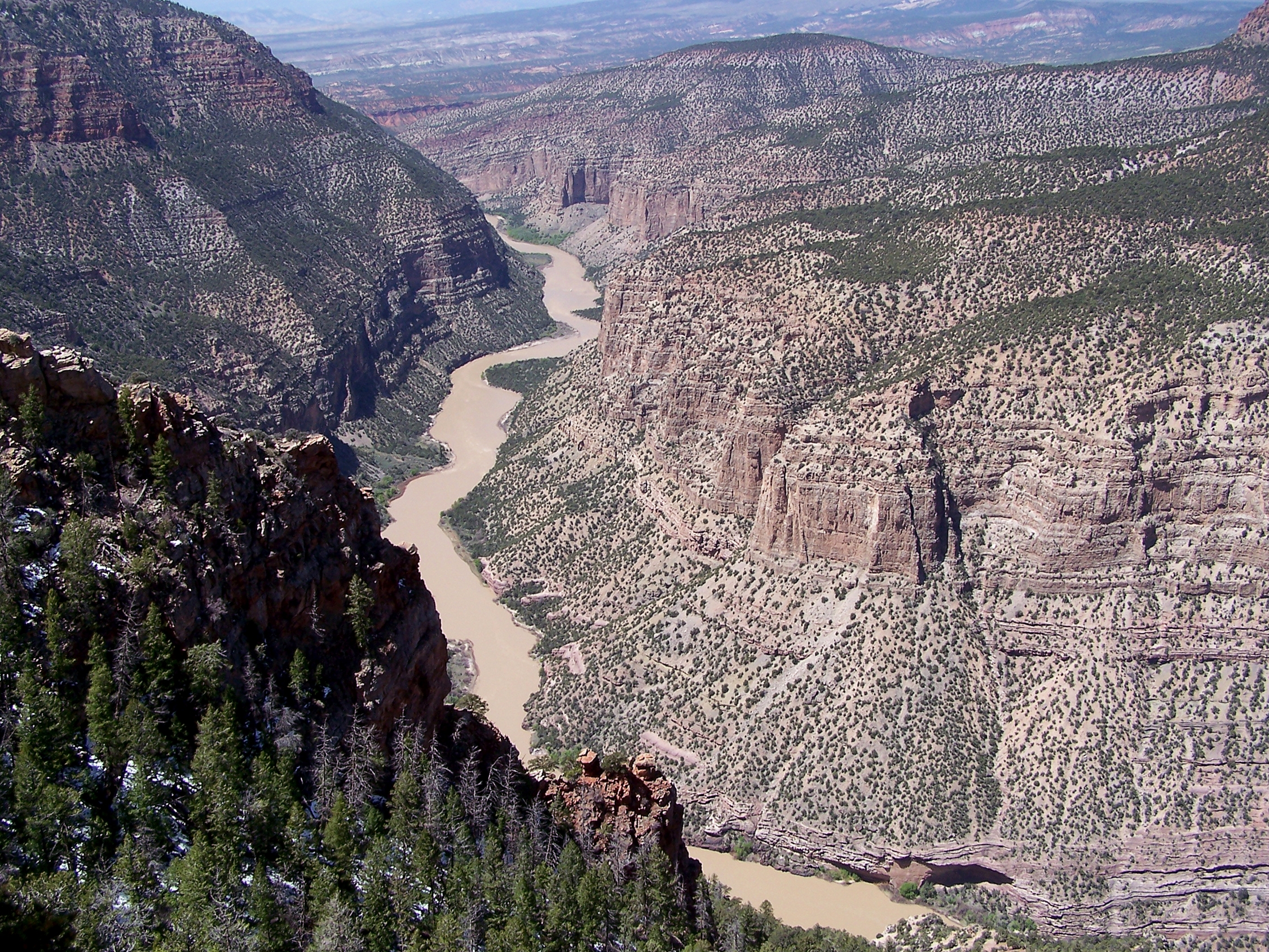
Dinosaur National Monument is found on the southeast region of the sandstone Uinta Mountains near the confluence of the Green and Yampa Rivers. The rugged landscape of the monument was shaped during the Laramide Orogeny, 70 million to 40 million years ago. The geological record exposed within 23 rock layers found within the monument spans some 1.2 billion years of extinct ecosystems. Only the walls of the Grand Canyon have a more complete, exposed record of geological stratification than that seen at Dinosaur National Monument. Whirlpool Canyon, shown here, was cut by the Green River, exposing the many rock layers of geological time.
Sign up for the Live Science daily newsletter now
Get the world’s most fascinating discoveries delivered straight to your inbox.
Securing the future
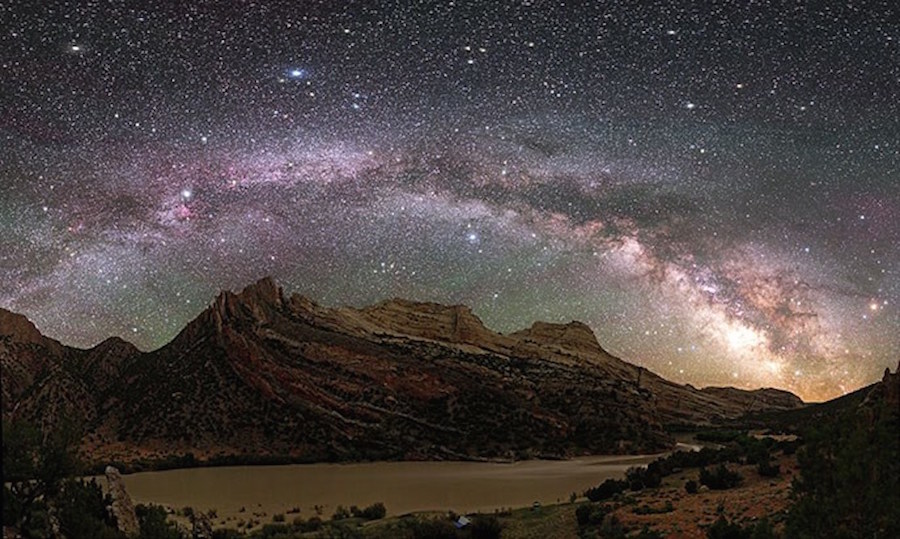
When Dinosaur National Monument was established in 1915, it was only 80 acres (32 ha) in size. But as paleontologists continue to explore the area, the uniqueness of the region — not only in paleontological treasures but also in archeological sites and recreational opportunities — became more and more apparent. So in 1938, President Franklin Roosevelt increased the size of Dinosaur National Monument to 210,844 acres (85,325 hectares). The nighttime picture above is an area of Dinosaur National Monument known as Mitten Park along the Green River, with the grandeur of the Milky Way shining above it.
Magnificent display
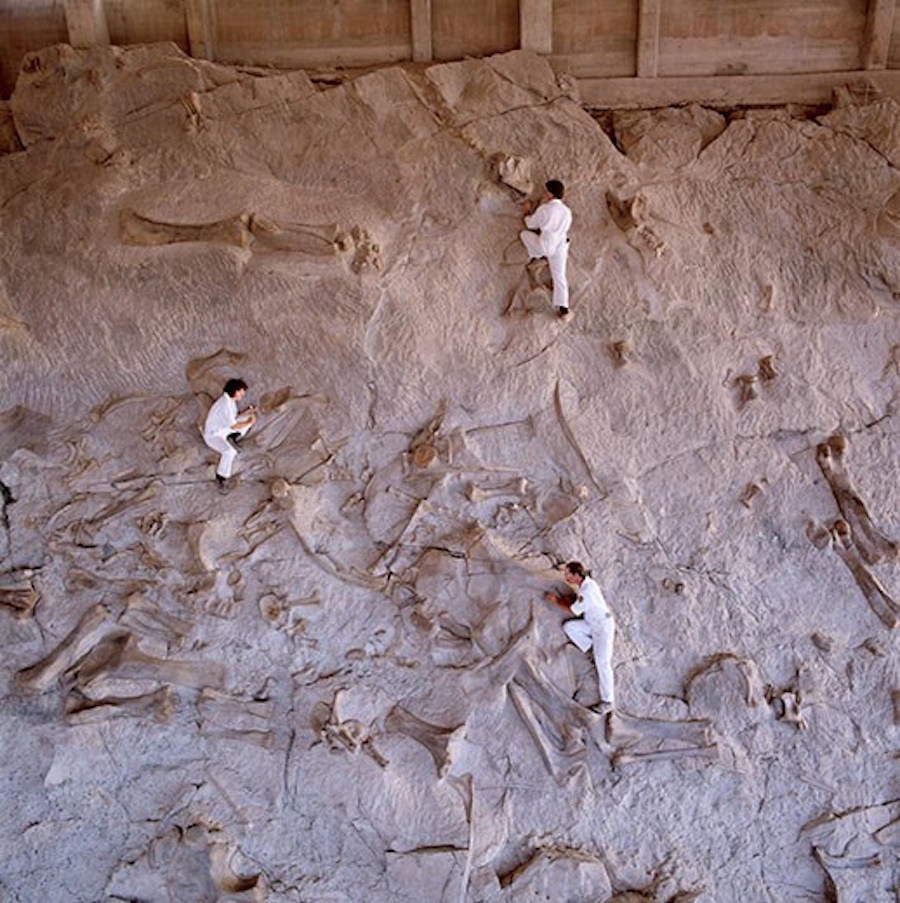
Quarry Exhibit Hall contains the centerpiece of dinosaur fossil remains found at Dinosaur National Monument. Here along an 80-foot-high wall, shown here, the fossilized remains of over 1,500 dinosaurs can be viewed, scattered within the sandstone wall just as an ancient river of water arranged them some 150 million years ago. The mural of stone displays the final resting place of the ancient and magnificent animals that roamed this part of America during the Morrison environment in the late Jurassic period. There are several locations along the great wall where monument visitors are allowed and encouraged to reach out and touch the ancient dinosaur fossils.
Strange discoveries
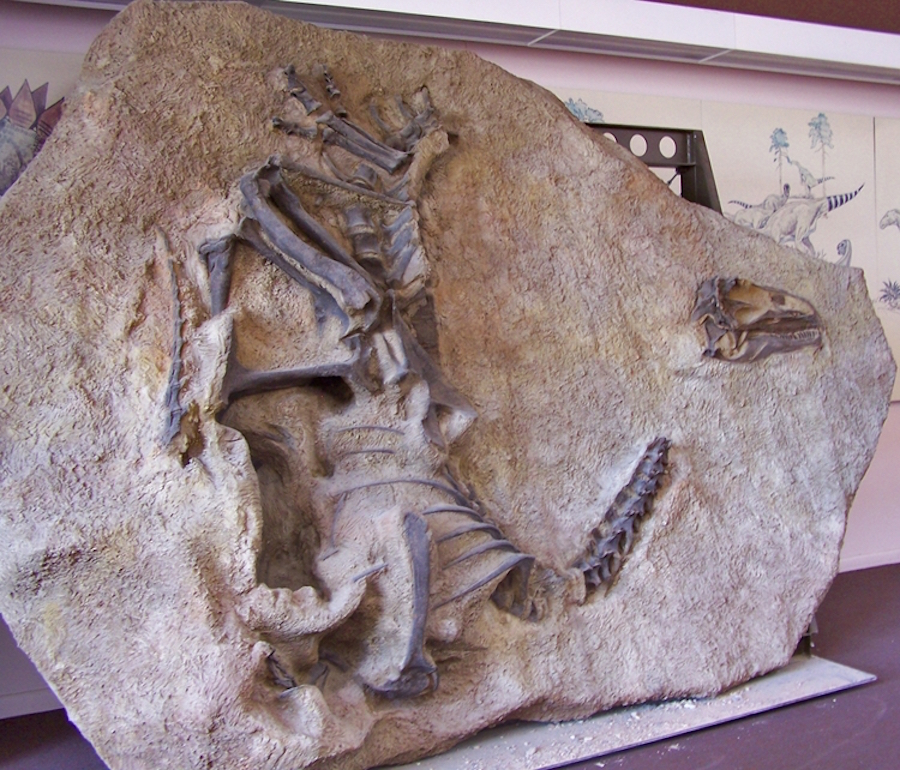
Quarry Exhibit Hall also contains many diagrams, drawings, documentaries and displayed fossil remains showing what life for these ancient creatures was like some 150 million years ago. Shown here are the fossilized remains of Allosaurus jimmadseni, which translates to mean "different reptile." A. jimmadseni was a theropod (meat eater), feeding most likely on smaller dinosaurs. Even though it was not the largest predator of its time, A. jimmadseni sported rows of serrated, sharp teeth and hooked-shaped claws that made it a deadly predator for many other dinosaurs alive at the time. This A. jimmadseni fossil seen at Dinosaur National Monument is the most detailed and complete Allosaurus fossil ever found.
Point of connection
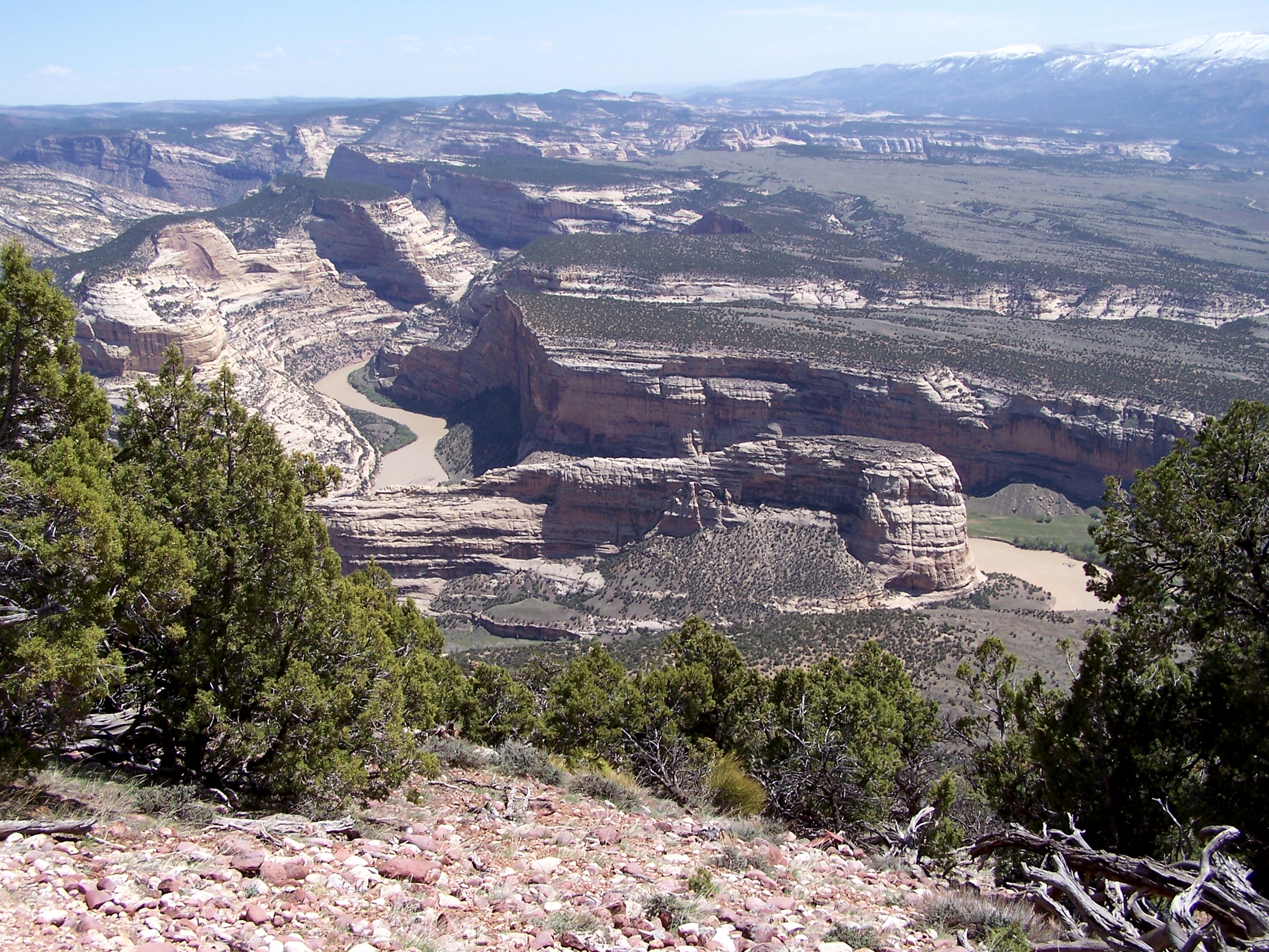
The Green and Yampa rivers are at the heart of the story of Dinosaur National Monument. From their source high in the Rocky Mountains, the Green and Yampa rivers meander across miles of sagebrush plains before entering this region of the Unita Mountains. Here, over millions of years, the forces of erosion from the waters of the two rivers have cut deep canyons and picturesque gorges while uncovering the 23 layers of folded and faulted rock that were a part of the great Laramie Orogeny uplift. Photo above is of Steamboat Rock at the confluence of the two rivers as seen from the Harpers Corner Trail.
Fun for all
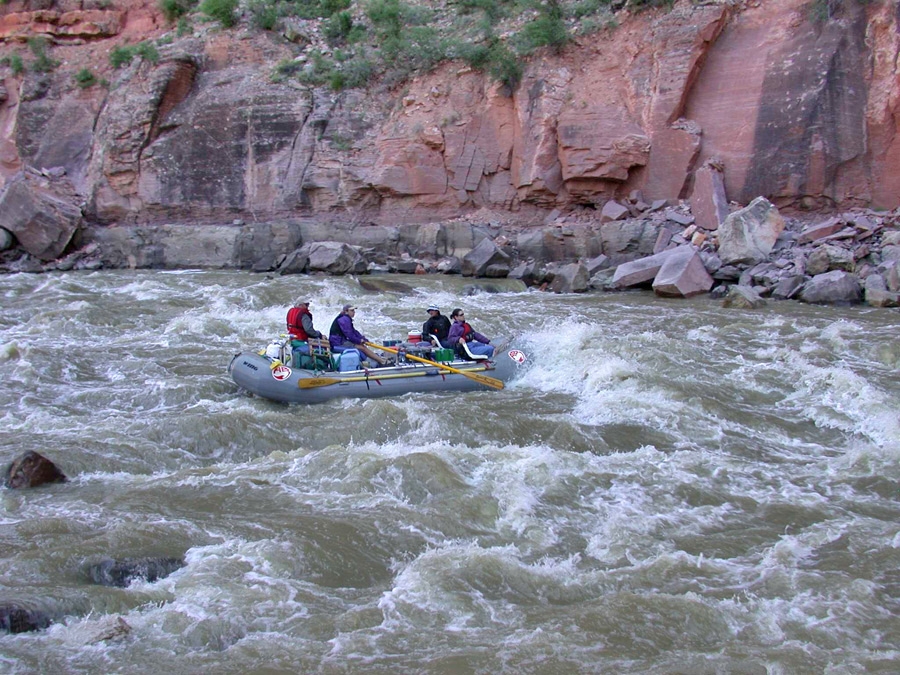
Recreational possibilities also abound within the national monument. Because of the extreme ruggedness of the land, most of the dozen established hiking trails are shorter in distance and located along the two main roads. But, Dinosaur National Monument allows off-trail hiking, which can take the experienced hiker to some of the most remote natural landscapes on the continent. The Yampa River rumbles and churns through 46 miles (74 km) of the heart of the national monument and is considered one of the best stretches of a free- flowing river in the American West. The picture above shows rafters passing through the Warm Springs Rapid on the Yampa River. The Green River passes through a different 45 miles (72 km) of monument landscape, and both rivers offer both commercial and private river trips.










